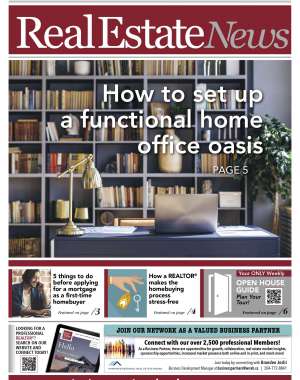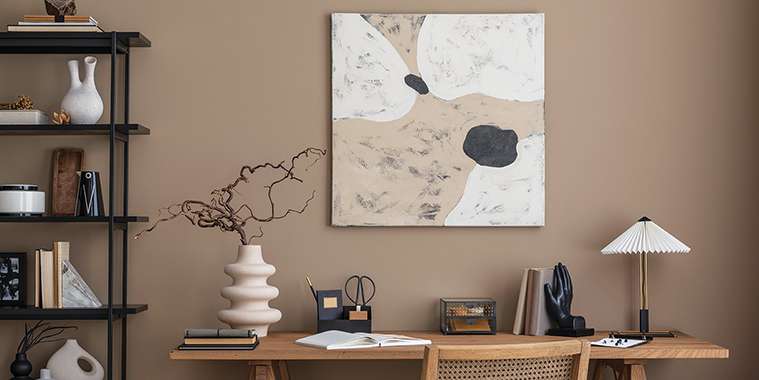In early 2020, many of us rushed to improvise home offices around lockdown requirements. Nearly four years down the road, home offices continue to flourish. Whether you work from home full-time or maintain a hybrid home/office combination, your home-based work space may be here to stay.
Chances are you’ve already taken steps to duty-share a guest room or you’ve created a corner that’s suitable for Zoom meetings. Yet, in the bustle of completing the day’s work, have you optimized things for yourself?
We’re talking beyond the office chair or desk you upgraded. Instead, let’s take a look at the refinements in comfort, ergonomics, productivity, and style that turn a home office into a home oasis.
Finding the bottlenecks
Job requirements typically define the type of space where you’ll perform best. While many jobs once required dedicated equipment, today, many of us perform a wide range of tasks on computers.
However, if you have tasks away from the keyboard and monitor, these must have a home too. This could be room to compile reports or an efficient way to process sources for data entry. Consider your work and where bottlenecks occur. Eliminate these, one-by-one, and your days become smoother.
Lighting
Particularly important in the short days of Canadian winters, lighting is often one of those overlooked and taken-for-granted features in a home office. Look for the signs. Are you squinting to see? Frequently leaning forward? Feeling eye strain? It might be because you haven’t layered your lighting.
Consider these lighting layers for your workspace:
• Ambient light The general lighting that makes a space seem light, dark, or somewhere between.
• Task lighting Desk lamps are the traditional source, though you may have specific needs, like a backlit keyboard and illumination for secondary work spaces.
• Perimeter lighting Lighting that focuses on illuminating the outer edges or boundaries of a space. Important for client comfort, whether they’re in your office or video conferencing.
• Accent lighting This is the layer that can elevate your home office to oasis status, since it can highlight features that reflect your personal style.
You can also add smart lighting, programmed to change subtly through the day, to support circadian rhythms. Light therapy lamps can also help to steer you away from seasonal affective disorder during winter.
Air quality
This could be a crucial factor if your office is in a previously undeveloped space, like an attic or basement. Have you addressed air quality, humidity, and ventilation? Once again, it’s time to make a list and tackle each hazard. You won’t do your best work in a spot that smells mouldy or with poor air circulation. Consider choosing plants that excel at purifying the air. Not only will you breathe better, you’re adding to the oasis environment in which you work.
Temperature
While you might consider the temperature of your workspace a matter of air quality, we’ve broken it into its own category as a fundamental comfort. Questions to ask include:
• Is the ambient temperature comfortable?
• How stable is the temperature?
• Can you easily change the temperature, up or down, for your comfort?
The World Health Organization (WHO) recommends an average room temperature range of 20 C and 22 C to maintain overall good health and wellbeing, but a study by Cornell University suggested raising the office temperatures from 20 C to 25 C reduces errors by 44% and can even increase productivity by 150%. Ultimately, it’s what works best for you, so long as the temperature remains comfortable and consistent.
Acoustics
True soundproofing is expensive and a potentially major renovation. Sound reduction, on the other hand, might be easier than you think. Sound absorbing elements include things like carpets and rugs, window coverings, upholstered furniture, and wall hangings. These can deaden echoes while also abating sound transfer into and out of your home office. Consider your work style too. Some people focus better in silence while you might like the background chatter of a radio or television to approximate the ambience of a busy office.
Fine tuning your oasis
The list of potential upgrades is as endless as it is individual. Here are some fine-tuning points you may want to consider:
• Zones Consider the focus zone as the place where you do the bulk of your tasks, and a creative zone, the spot to switch mental gears, problem solve, and change the pace of your day.
• Colour psychology Choose blues to calm a stressful job, look to warm oranges and yellows to boost creativity and energy.
• Technology Select tech that’s easy to work with while providing benefits to you and your tasks, like quality monitors, track balls or mice, graphics tablets, external hard drive backup storage, task management apps, high-speed internet access, and perhaps a backup connection, such as a smartphone with wi-fi hotspot capability.
• Build a workspace routine Portion your tasks and time into blocks, and include breaks and stretching before closing off your day with a review and planning session for tomorrow.
When you put your mind to it, you’ll generate the “me space” priorities that define your ideal workspace. Remember, it’s an ongoing process of refinement but by adapting your surroundings, you can help make a difference in both personal satisfaction and professional efficiency.
— REALTOR.ca



